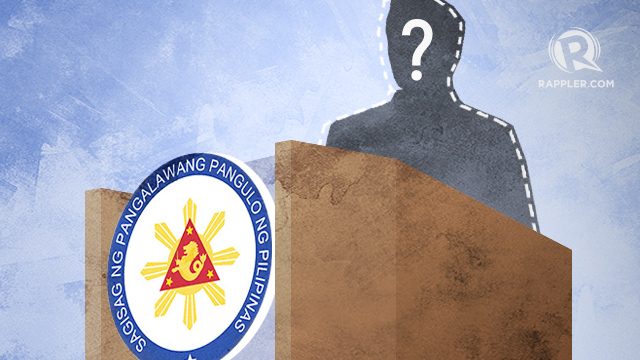SUMMARY
This is AI generated summarization, which may have errors. For context, always refer to the full article.

MANILA, Philippines – For criticizing the government’s war on drugs, Vice President Leni Robredo may find herself the subject of an impeachment complaint, with no less than House Speaker Pantaleon Alvarez mulling the filing of that complaint against her.
If this happens, the president can nominate a member of Congress to assume the vice presidency, based on the 1987 Constitution. (READ: If the VP is impeached, who takes over?)
But can the vice presidency be left vacant? In the past, has the vice presidency here ever been left vacant? History shows there have been several periods when the Philippine president didn’t have a second-in-command. (READ: Spare tire or not? The role of the Philippine vice president)
Who were the presidents who were, for varying stretches, without a vice president?
Sergio Osmeña
In 1944, Sergio Osmeña became president following the death of Manuel Quezon, becoming the second president of the Commonwealth. He did not have a vice president then, as the 1943 Constitution abolished the position and vested executive power solely in the president. The position was left vacant from August 1944 to May 1946.
The amended 1935 Constitution – paving the return of the vice president in the executive department – was reestablished with the restoration of the Commonwealth government on February 27, 1945. In 1946, Elpidio Quirino assumed office as vice president under the presidency of Manuel Roxas.
Article VII of the amended 1935 Constitution prescribed the succession of power if the president was removed from office or could no longer perform his functions.
Section 8. In the event of the removal of the President from office, or his death, resignation, or inability to discharge the powers and duties of the said office, the same shall devolve on the Vice-President, and the Congress shall by law provide for the case of removal, death, resignation, or inability, both of the President and Vice-President, declaring what officer shall then act as President, and such officer shall act accordingly, until the disability be removed, or a President shall be elected.
Elpidio Quirino
After Roxas’ death in 1948, his vice president Quirino succeeded him. Quirino did not have a vice president from 1948 to 1949, as the amended 1935 Constitution, which was still in effect then, did not have provisions on what would happen in case of a vacancy in the office of the vice president.
Quirino was then elected president for a 4-year term in 1949, with Fernando Lopez serving as his vice president.
Carlos Garcia
Carlos Garcia succeeded Ramon Magsaysay following the latter’s death in 1957. From March to December of the same year, Garcia did not have a vice president. During the 1957 elections, Diosdado Macapagal was elected vice president, serving until 1961. At this time, the amended 1935 Constitution was still in effect.
Ferdinand Marcos
From December 1965 to December 1969, Marcos’ vice president was Fernando Lopez. Lopez was elected for a second term from 1969 to 1973, but his term was cut short when Marcos declared Martial Law in 1972.
Under the martial law regime, the 1973 Constitution was ratified to replace the amended 1935 Constitution. The position of the vice president was again abolished under the new constitution.
Under Section 7, Article VII of the 1973 Constitution, the Executive Committee, headed by the prime minister, will exercise the powers of the president in case of the latter’s death, permanent disability, removal from office, or resignation.
If this happens earlier than 18 months before the president’s term of office expires, the Batasang Pambansa should call a special election within 30 days from the time of vacancy.
In the absence of an Executive Committee, the Speaker of the Batasang Pambansa shall act as president, according to the 1973 charter.
The position of vice president was reestablished under the amended 1973 Constitution. However, the presidential succession provision was transferred to the Speaker of the National Assembly.
Robredo is currently serving as the 14th Philippine vice president. Among the vice presidents in Philippine history, there has been only one who became chief executive through the resignation of a predecessor: former president Gloria Macapagal-Arroyo, who replaced Joseph Estrada in 2001 after the latter was ousted from office.
As president, Arroyo chose Teofisto Guingona Jr, then the Senate minority leader, to be her second-in-command, with Congress confirming his nomination. This makes Guingona the only vice president who was not nationally elected to the position.
Under the provisions of the present 1987 Constitution, the president will nominate a vice president from among the members of Congress in case there is a vacancy in the Office of the Vice President.
The nominated vice president will assume office upon confirmation by a majority vote of all the members of both Houses of Congress. – Rappler.com
Add a comment
How does this make you feel?
There are no comments yet. Add your comment to start the conversation.